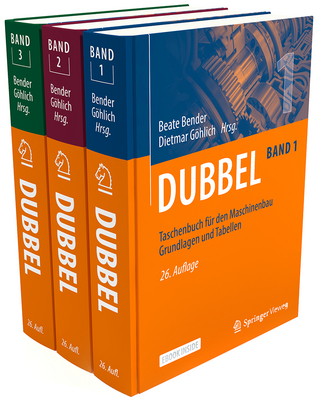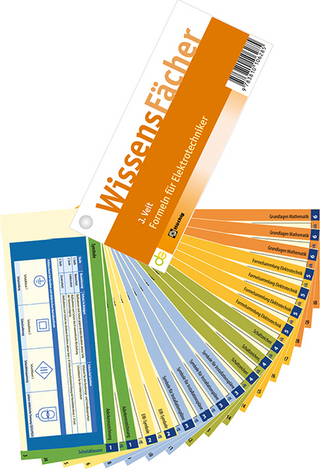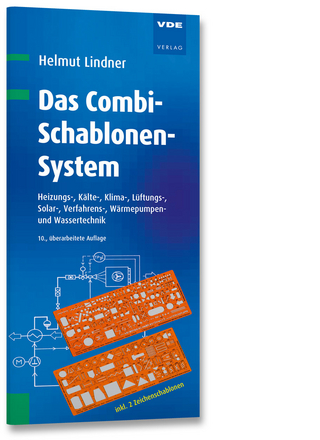
Digital Electronics
Pearson
978-0-13-089629-2 (ISBN)
- Titel erscheint in neuer Auflage
- Artikel merken
This easy-to-understand book illustrates practical applications using circuits the student will face on the job.
Digital electronics is the foundation of computers and microprocessor-based systems found in automobiles, industrial control systems, and home entertainment systems. Technological advances made in the past 25 years have provided us with integrated circuits and CPLDs (Complex Programmable Logic Devices) that can perform complex tasks with a minimum amount oh abstract theory and complicated circuitry, bringing us to an exciting place in this important field. An understanding of digital electronics not only provides the prerequisite background (or further studies in microprocessors and microcomputer interfacing, it also (asters the job skills that are needed to open doors to a myriad of technical careers involving computers and microprocessors. This best-selling text, Digital Electronics: A Practical Approach, Sixth Edition, covers the fundamentals of digital electronics and is intended for students of technology, computer science, and engineering programs.
As its name implies, the book approaches digital electronics from a practical perspective, enabling students who are taking a one- or two-semester course to learn the actual skills required to design and troubleshoot digital circuitry that they will see on the job. Stressing the importance of analytical reasoning skills and basic digital design using industry-standard integrated circuits and CPLDs, the book is written in a style that is both engaging and easy to read and understand, heavily supported by a multitude of review questions, problem sets, examples, illustrations, and troubleshooting applications. In addition, an extensive package of ancillary material is available to aid in the teaching ,and learning process, including: * Two CD-ROMs packaged with each copy of this text, containing: -- Electronics Workbench(R)/MultiSIM(R) Circuit. data files -- Solutions to in-text CPLD examples using Xilinx and Altera ,SM Texas Instruments Data Sheets * Instructor's Resource Manual (ISBN 0-13-092293-5) containing: -- Solutions and answers to in-text problems -- Solutions to Standard Logic Laboratory Manual -- Test Item File * PowerPaint(R) transparencies (ISBN 0-13-092294-3) * Three Laboratory Manuals (Standard Logic) (ISBN 0-13-092291-9) -- A Troubleshooting Approach, by Michael Wiesner and Vance Venable (Altera ,SM CPLDs) (ISBN 0-13-084256-7) -- Digital Logic Simulation and CPLD Programming, by Steve Waterman (Xilinx CPLDs) (ISBN 0-l3-088192-9) -- Digital Laboratory Experiments, by James Stewart and Chao-Ying Wang * PH Test Manager (ISBN 0-13-093417-8) * Instructor's Supplement CD (ISBN 0-13-092541-1) * CourseCompass (ISBN 0-13-094415-7) * WebCT (ISBN 0-13-062319-9) * Blackboard (ISBN 0-13-062318-0) * Companion Website: http://www.
prenhall.com/kleitz
(NOTE:Each chapter begins with an Outline, Objectives, and an Introduction, and concludes with a Summary, Glossary, Problems, Schematic Interpretation Problems, Electronics Workbench Exercises, and Answers to Review Questions. )
1. Number Systems and Codes.
Digital Versus Analog. Digital Representations of Analog Quantities. Decimal Numbering System (Base 10). Binary Numbering System (Base 2). Decimal-to-Binary Conversion. Octal Numbering System (Base 8). Octal Conversions. Hexadecimal Numbering System (Base 16). Hexadecimal Conversions. Binary-Coded-Decimal System. Comparison of Numbering Systems. The ASCII Code. Applications of the Numbering System.
2. Digital Electronic Signals and Switches.
Digital Signals. Clock Waveform Timing. Serial Representation. Parallel Representation. Switches in Electronic Circuits. A Relay as a Switch. A Diode as a Switch. A Transistor as a Switch. The TTL Integrated Circuit. The CMOS Integrated Circuit. Surface-Mount Devices.
3. Basic Logic Gates.
The AND Gate. The OR Gate. Timing Analysis. Enable and Disable Functions. Using IC Logic Gates. Introduction to Troubleshooting Techniques. The Inverter. The NAND Gate. The NOR Gate. Logic Gate Waveform Generation. Using IC Logic Gates. Summary of the Basic Logic Gates and IEEE/IEC Standard Logic Symbols.
4. Programmable Logic Devices: Altera and Xilinx CPLDs and FPGAs.
PLD Design Flow. PLD Architecture. Using PLDs to Solve Basic Logic Designs. CPLD Problems.
5. Boolean Algebra and Reduction Techniques.
Combinational Logic. Boolean Algebra Laws and Rules. Simplification of Combinational Logic Circuits Using Boolean Algebra. De Morgan's Theorem. The Universal Capability of NAND and NOR Gates. AND-OR-INVERT Gates for Implementing Sum-of-Products Expressions. Karnaugh Mapping. System Design Applications. CPLD Design Applications. CPLD Problems.
6. Exclusive-OR and Exclusive-NOR Gates.
The Exclusive-OR Gate. The Exclusive-NOR Gate. Parity Generator/Checker. System Design Applications. CPLD Design Applications. CPLD Problems.
7. Arithmetic Operations and Circuits.
Binary Arithmetic. Two's-Complement Representation. Two's-Complement Arithmetic. Hexadecimal Arithmetic. BCD Arithmetic. Arithmetic Circuits. Four-Bit Full-Adder ICs. System Design Applications. Arithmetic/Logic Units. CPLD Design Applications. CPLD Problems.
8. Code Converters, Multiplexers, and Demultiplexers.
Comparators. Decoding. Encoding. Code Converters. Multiplexers. Demultiplexers. System Design Applications. CPLD Design Applications. CPLD Problems.
9. Logic Families and Their Characteristics.
The TTL Family. TTL Voltage and Current Ratings. Other TTL Considerations. Improved TTL Series. The CMOS Family. Emitter-Coupled Logic. Comparing Logic Families. Interfacing Logic Families.
10. Flip-Flops and Registers.
S-R Flip-Flop. Gated S-R Flip-Flop. Gated D Flip-Flop. Integrated-Circuit D Latch (7475). Integrated-Circuit D Flip-Flop (7474). Master—Slave J-K Flip-Flop. Edge-Triggered J-K Flip-Flop. Integrated-Circuit J-K Flip-Flop (7476, 74LS76). Using an Octal D Flip-Flop in a Microcontroller Application. CPLD Problems.
11. Practical Considerations for Digital Design.
Flip-Flop Time Parameters. Automatic Reset. Schmitt Trigger ICs. Switch Debouncing. Sizing Pull-Up Resistors. Practical Input and Output Considerations.
12. Counter Circuits and Applications.
Analysis of Sequential Circuits. Ripple Counters. Design of Divide-by-N Counters. Ripple Counter ICs. System Design Applications. Seven-Segment LED Display Decoders. Synchronous Counters. Synchronous Up/Down-Counter ICs. Applications of Synchronous Counter ICs. CPLD Design Applications. CPLD Problems.
13. Shift Registers.
Shift Register Basics. Parallel-to-Serial Conversion. Recirculating Register. Serial-to-Parallel Conversion. Ring Shift Counter and Johnson Shift Counter. Shift Register ICs. System Design Applications for Shift Registers. Driving a Stepper Motor with a Shift Register. Three-State Buffers, Latches, and Transceivers. CPLD Design Applications. CPLD Problems.
14. Multivibrators and the 555 Timer.
Multivibrators. Capacitor Charge and Discharge Rates. Astable Multivibrators. Monostable Multivibrators. Integrated Circuit Monostable Multivibrators. Retriggerable Monostable Multivibrators. Astable Operation of the 555 IC Timer. Monostable Operation of the 555 IC Timer. Crystal Oscillators.
15. Interfacing to the Analog World.
Digital and Analog Representations. Operational Amplifier Basics. Binary-Weighted D/A Converters. R/2R Ladder D/A Converters. Integrated-Circuit D/A Converters. Integrated-Circuit Data Converter Specifications. Parallel-Encoded A/D Converters. Counter-Ramp A/D Converters. Successive-Approximation A/D Conversion. Integrated-Circuit A/D Converters. Data Acquisition System Application. Transducers and Signal Conditioning.
16. Semiconductor, Magnetic and Optical Memory.
Memory Concepts. Static RAMs. Dynamic RAMs. Read-Only Memories. Memory Expansion and Address Decoding Applications. Magnetic and Optical Storage.
17. Microprocessor Fundamentals.
Introduction to System Components and Buses. Software Control of Microprocessor Systems. Internal Architecture of a Microprocessor. Instruction Execution Within a Microprocessor. Hardware Requirements for Basic I/O Programming. Writing Assembly Language and Machine Language Programs. Survey of Microprocessors and Manufacturers. Summary of Instructions.
Appendix A. WWW Sites.
Appendix B. Manufacturers' Data Sheets.
Appendix C. Explanation of the IEEE/IEC Standard for Logic Symbols (Dependency Notation).
Appendix D. Answers to Odd-Numbered Problems.
Appendix E. CPLD Software Tutorials.
Appendix F. Review of Basic Electricity Principles.
Appendix G. Schematic Diagrams for Chapter-End Problems.
Index.
Supplementary Index of ICs.
| Erscheint lt. Verlag | 19.7.2001 |
|---|---|
| Sprache | englisch |
| Maße | 217 x 283 mm |
| Gewicht | 2074 g |
| Themenwelt | Technik ► Elektrotechnik / Energietechnik |
| ISBN-10 | 0-13-089629-2 / 0130896292 |
| ISBN-13 | 978-0-13-089629-2 / 9780130896292 |
| Zustand | Neuware |
| Haben Sie eine Frage zum Produkt? |
aus dem Bereich



